17+ Sample Wrongful Termination Letters
-
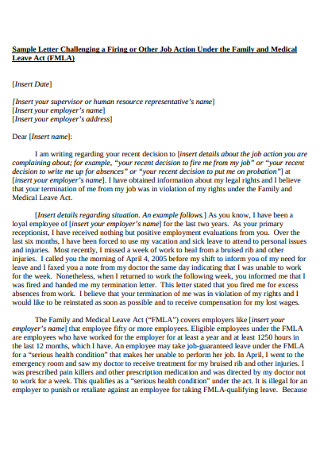
Sample Wrongful Termination Letter
download now -
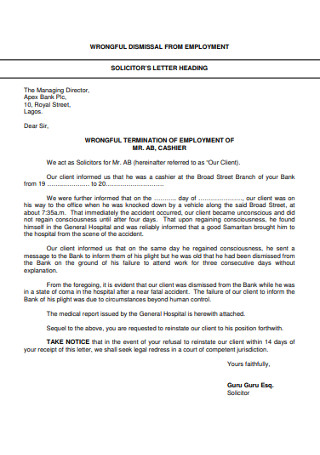
Wonderful Employment Termination Letter
download now -
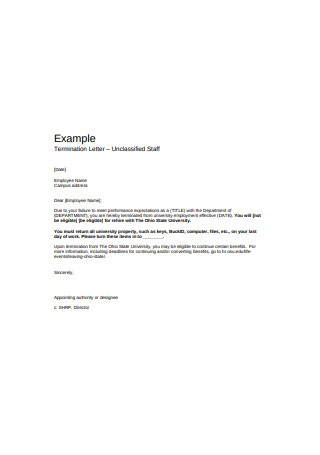
Unclassified Staff Termination Letter
download now -

Termination Notice Letter
download now -
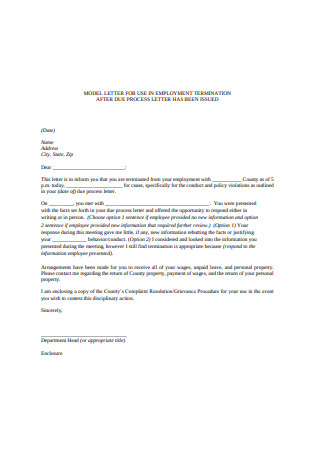
Model Letter for Employment Termination
download now -
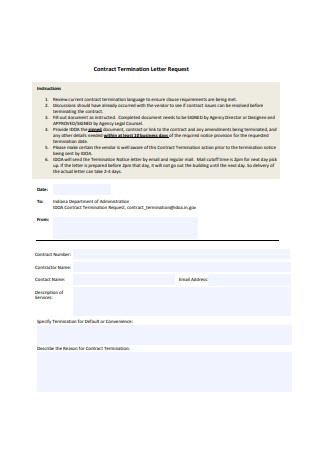
Contract Termination Letter Request
download now -
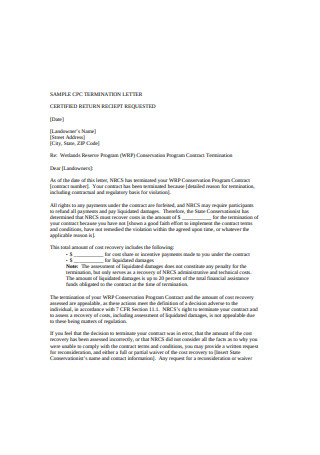
Simple Termination Letter
download now -
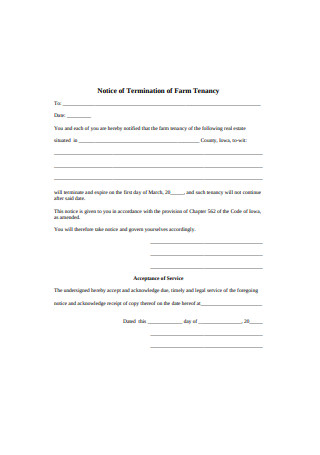
Notice of Termination Letter of Farm Tenancy
download now -
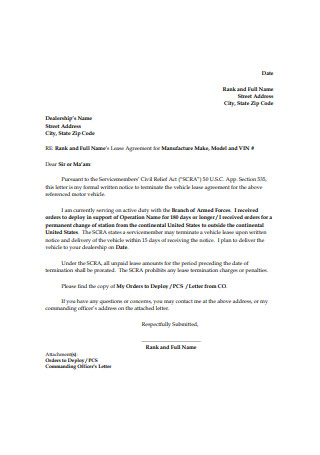
Motor Vehicle Lease Termination Letter
download now -

Residential Lease Termination Letter
download now -
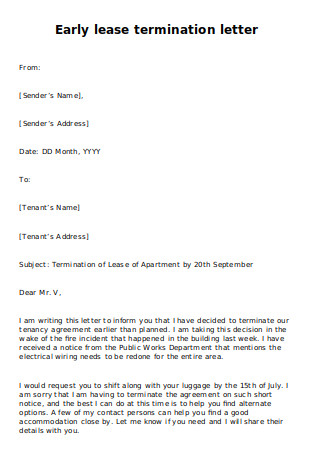
Lease Termination Letter
download now -
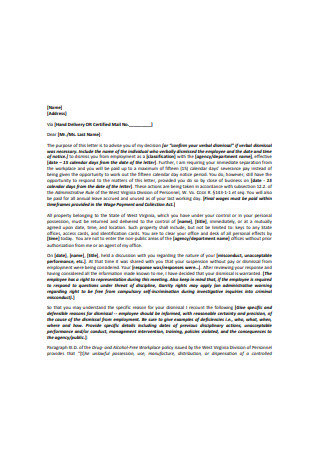
Basic Termination Letter
download now -
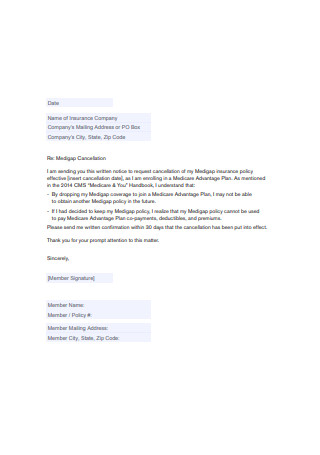
Formal Termination Letter
download now -
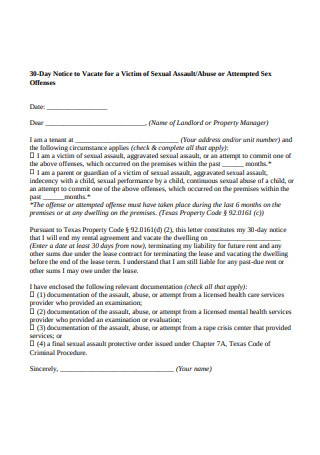
Formal Lease Termination Letter
download now -
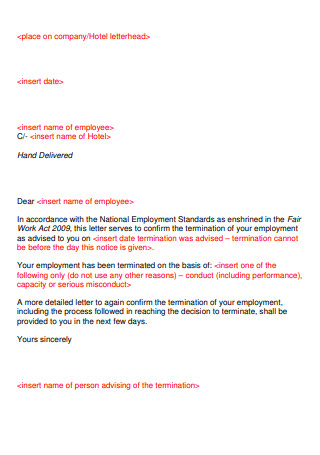
Standard Termination Letter
download now -
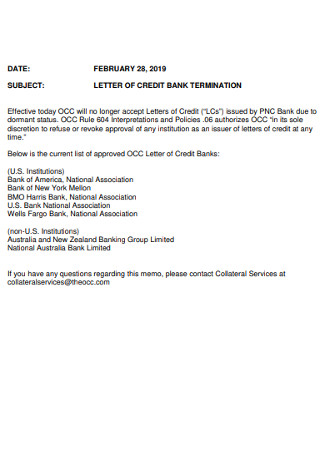
Letter of Credit Bank Termination
download now -
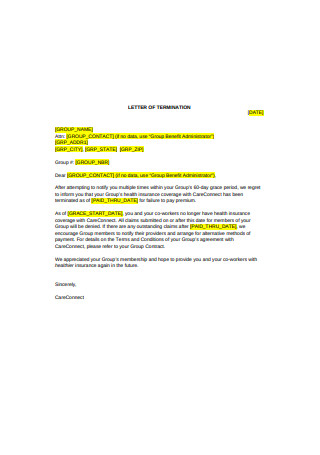
Contract Termination Letter
download now -
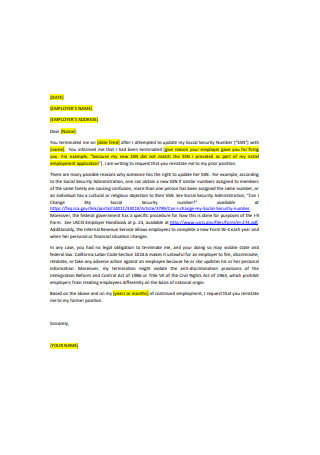
Termination Letter after Updated Social Security Number
download now
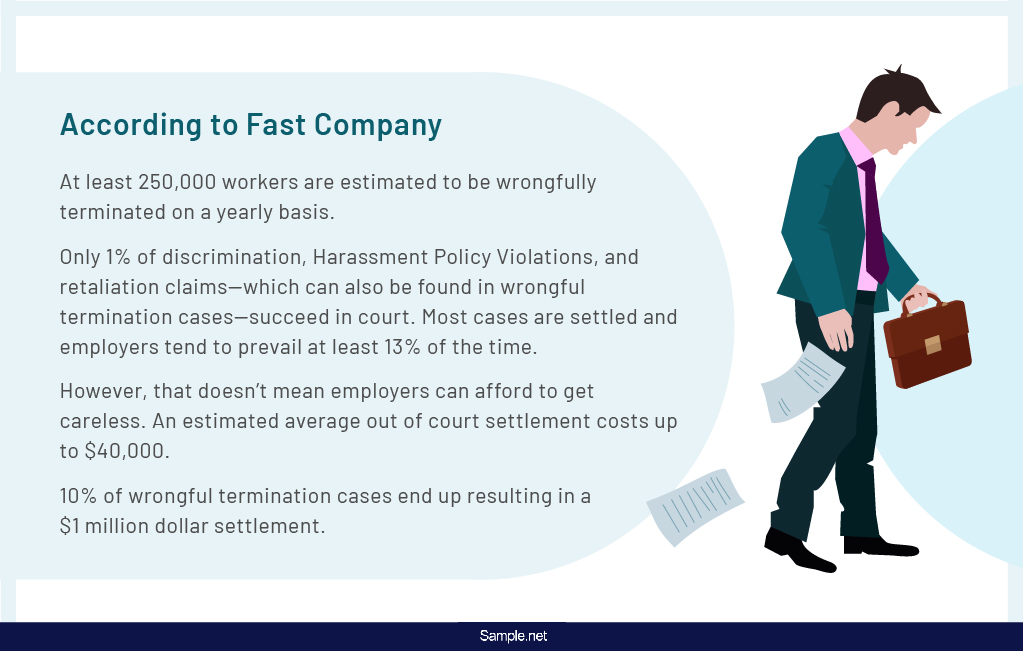
What Is a Wrongful Termination Letter?
Also referred to as wrongful dismissal letter, a wrongful termination letter is a document that is written to former employers by those who believe their employment to have been unfairly ended. These are often the start of wrongful termination cases, which is considered to be 1 out of the 5 most common work-related lawsuits in the United States. This letter may be written by the aggrieved former employee personally or by an attorney. Due to the complexities involved in most specific cases, it is often advisable for one to consult an attorney just to see if there is truly a case to be made about one’s termination before proceeding.
Employing a wrongful termination letter may end with the aggrieved party achieving some measure of peace for what’s been done to them, but it does not guarantee anything. At least 250,000 workers are estimated to be wrongfully terminated on a yearly basis. According to Fast Company, only 1% of discrimination, harassment policy violations, and retaliation claims—which can also be found in wrongful termination cases—succeed in court. Most cases are settled and employers tend to prevail at least 13% of the time. However, that doesn’t mean employers can afford to get careless. An estimated average out of court settlement costs up to $40,000. In addition to that, 10% of wrongful termination cases end up resulting in a $1 million dollar settlement.
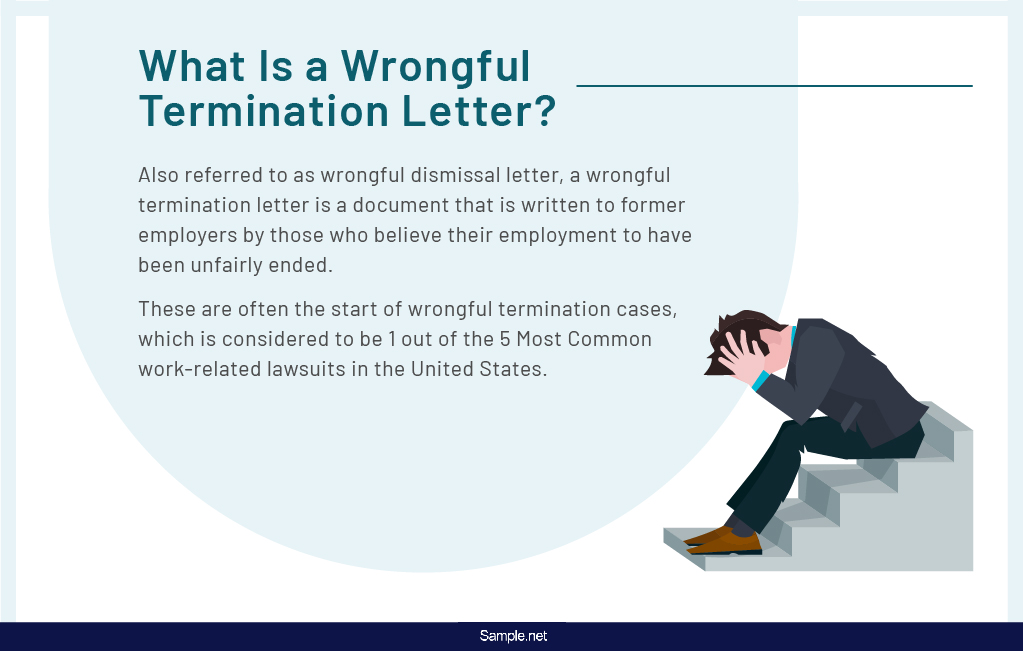
The Types of a Wrongful Termination
Once you and your attorney have decided that you indeed have a case against a former employer, you may begin looking into your official business document. Let it be known that every valid wrongful termination letter is going to be one of several common types. Before you start writing the letter, familiarize yourself with these types through the short but detailed list below.
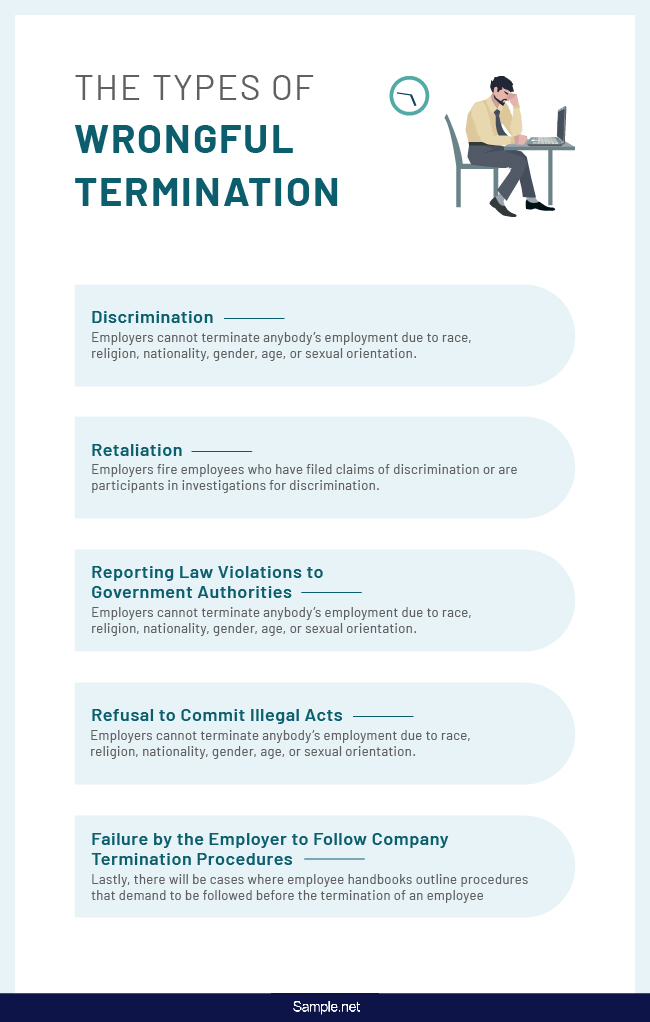
How to Write a Wrongful Termination Letter
Now that you are aware of what constitutes as wrongful termination, you may begin the actual process of writing the letter. Those who are working with an attorney over this may not need to do further research. For those who have decided to personally pen their letters, may the following step-by-step procedure serve as your guide throughout the process.
Step 1: Address Your Letter to the Appropriate Individual
The first step of this process is to ensure that your letter is addressed to the right person within your former company. Who this is will vary, but it is common to address the letter to any of the following: the head of human resources, your former direct supervisor, or the person directly responsible for terminating you.
Step 2: Summarize Your Termination
The next step would be to start your letter by including the summarized details of your termination. It is for this reason that taking note of even the most minute details can be a smart move on anyone’s part. Among the details you need to summarize would include: the exact date you were terminated, the exact time, the specific reasons given to you, and the person responsible for your termination.
Step 3: Provide the Necessary Details of the Dispute
What comes next may end up taking the space of multiple paragraphs. After giving the details of your termination, provide even more details regarding why you believe you have a case against your former employer. You may begin by first revealing what reasons you believe you were terminated for, whether it is consistent with their own reasons or not. Second, reveal what policy or business contract provisions you believe were violated by your termination. Next comes any incidents that are indicative of your unlawful termination for prohibited reasons. From there, you need to discuss whatever documentation you may have that can support your previous statements.
Step 4: Provide a Time Period for a Response
The fourth step will involve you asking your former employer to respond to your letter within a specific period of time. For many, thirty days is considered to be reasonable enough. Write down that you are considering even more serious courses of action should there be no response to your letter. Never specify what those actions are. Remember that the line between stating lawful repercussions and making coercive threats is a fine one to cross.
Step 5: Proofread Your Letter
Give yourself a few days before rereading what you have written. Editing your work immediately after writing it will not provide you with any fresh perspective, so the time off is necessary. Once you’ve been away from your letter for a reasonable amount of time, dive back into it and check for any errors that you might have made. Ensure that the quality of the letter is as high as possible so that you can be assured of its maximum potential and effectiveness.
Step 6: Attach Copies of Supporting Documentation
If you have any supporting documents that could possibly help with your case, then you would be wise to attach copies to your letter. Make numerous copies of the supporting document in the event that you will need them at a later date. Remember that it is better to be safe than sorry, so never use any original documents.
Step 7: Sign the Letter
The last step for you to take would be to print out your letter and then sign it. Your signature needs to be in ink and the name you sign on also needs to be the same one that you used in your former employee file. That last part is only applicable to those who may be operating under a different name or have opted to legally change their name for whatever reason during the time after they have been wrongfully terminated from their former company.
The Dos and Don’ts of a Wrongful Termination Letter
Simply knowing the types of wrongful termination and the letter-writing procedure will not be enough. There are cases where it pays to learn as much about the document’s nuances along with any avoidable pitfalls. In doing so, you can better guarantee that your wrongful termination letter will live up to your expectations and help you reap the results that you dearly desire. Take a look at the following list of dos and don’ts for that very purpose.
Dos
Do read up on your former company’s termination policies.
Before you go writing your letter, you must first determine as to whether or not your dismissal from the company was actually unlawful or not. One of the simpler ways to do so would be to read your company employee handbook, that is if you still have a copy of it. Look into the company’s termination policies and see just how well they followed it for your firing. If they managed to violate their own policies then you can be assured that it is a good reason enough for you to claim wrongful termination, among other potential reasons you may have.
Do make certain that your termination reasons were truly prohibited by law.
For similar reasons to the one above, you also need to make sure that the circumstances of your firing was prohibited by law. What is prohibited and what isn’t will depend greatly on the state that you live in, so a great deal of research may be needed. Once you have successfully determined that you were, in fact, terminated wrongfully according to the law, then you can move on to writing your wrongful termination letter in full confidence.
Do extensively consult an attorney.
Although writing the letter expressing your grievance and dispute with your former employer is something that you can do on your own, it is never a bad idea to get some help. The use of an attorney’s services is not only advisable but even required in some cases. Not only will an attorney be able to help you navigate through the legal pitfalls but you will have a much easier time writing the wrongful termination letter overall. Make time to consult an attorney and it is practically a guarantee that you will see the proper results of your actions.
Do make use of certified mail.
These days, there are multiple ways that you can send your letter. Yet it remains highly recommendable that you make use of certified mail when it comes to important documents like this. Among the advantages that you can expect would include proof of delivering, the capacity to track the location of your correspondence, extra protection against loss, and record retention. With certified mail, you won’t have to worry about whether or not your former employer has received your letter or not. Even if the delivery is taking much longer than expected, the tracking aspect can help in relieving you of any of the stress and anxiety involved.
Do be patient when waiting for a response.
Be sure that you actually wait out the time that you provided in your letter before trying to initiate more direct means of contact with your former employer. Once your former employer has contacted you, it is important to remain professional. List patiently to whatever it is that they have to say to you. In the event that it is possible to work out a reasonable solution, then that would be for the best. If not, then perhaps you may need to consider more than just writing a letter.
Don’ts
Do not fail to take note of specific instances.
There may be more than one instance within your time in the company that could help support your wrongful termination case. An example would be inappropriate jokes that were either tolerated or even made by management themselves in regards to the protected class which you may belong to. Stereotyping statements tolerated or made by management can also count. Either way, keeping a record of these incidents can be quite helpful. Failing to do so may rob you of certain advantages down the line.
Do not convey too much emotion in the letter.
Your official letter must be written in a tone that is as professional as you can manage. It is understandable that you may feel upset at the turn of events. Lashing out at your employer through the letter, on the other hand, is far less understandable because that would cast you in a negative light. You want to be seen as someone pursuing justice and not someone who is simply acting upon a personal grudge.
Do not make specific or overt threats.
For your wrongful termination letter to be as effective as it has any right to be, you need to moderate what content you plan on including. As stated before, it is perfectly reasonable to inform your former employer of the legal consequences of either their actions to you or their inactions. With that said, you must remain cautious about how you term it. By writing it in a way that seems coercive or in ways that make it seem like you are employing blackmail, you are actually being counterproductive. The courts of law may even start to look favorably upon your former employer, so put your emotions in check and be dispassionate in tone for your letter.
Do not neglect any supporting documents.
The use of supporting documents can greatly help you gain traction with your case. Remember that any copies that you have may need to be attached to your wrongful termination letter. Although these are not necessarily required, neglecting supporting documents may prevent you from getting the justice that you are searching for.
Do not write more than one wrongful termination letter.
A single wrongful termination letter is usually enough to let your disputes be known to all, especially those who were directly responsible for firing you. The creation of additional letters is generally uncalled for. Writing more than one, in this case, would be a waste of your time. If you are waiting for a response to the first letter that you wrote, then it is advisable to just be patient rather than write a second one. Those who aren’t sure about whether or not their intended recipient has received the letter may check on its status provided that certified mail was used.
Employers who believe that their reasons for terminating employees are immediately acceptable definitely have cause to think twice now in consideration of all the damages a wrongful termination letter can cause. They themselves would also benefit from actively trying to remain cool and calm before dispatching their own work termination letters. Sticking to company policies and refraining from retaliation, among many others, would be anyone’s best bet under the face of such circumstances. For those among you who still find themselves being wronged by employers, a slew of online resources are readily available. When downloading wrongful termination letter templates, keep in mind that you may need to edit as much of the pre-existing content as possible before printing it out and affixing your signature on it.
